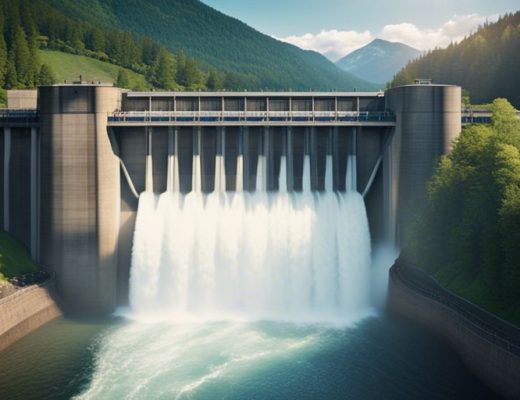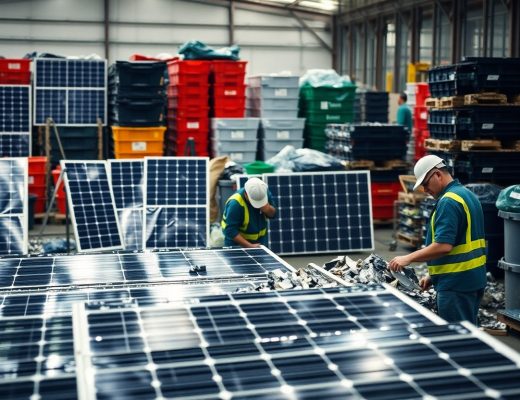With our planet facing growing energy demands and environmental concerns, it is crucial to explore sustainable and efficient ways to generate power. Have you ever considered the untapped potential of wave energy as a clean and renewable source of electricity? In this blog post, we will examine into the benefits and challenges of harnessing wave power and how it could revolutionize the future of energy production. Let’s initiate on a journey to discover the power of the ocean waves!
The Science Behind Wave Energy
Ocean Waves as a Renewable Resource
Behind the mesmerizing beauty of ocean waves lies a powerful force that can be harnessed to generate clean and sustainable energy. As a renewable resource, ocean waves offer a constant and abundant source of energy that can help reduce our dependence on non-renewable sources like coal and oil. By capturing the kinetic energy of waves, we can convert it into electricity to power homes, businesses, and communities.
Principles of Wave Energy Conversion
Ocean waves are formed by the wind as it moves across the surface of the ocean. The energy from the wind is transferred to the water, creating ripples that eventually develop into larger waves. Wave energy conversion technology works by capturing the up-and-down motion of these waves and converting it into mechanical energy, which is then transformed into electricity through a generator. This process is similar to how wind turbines convert wind energy into power, but instead of air, it’s the water that’s in motion.
A key principle in wave energy conversion is the efficiency of capturing and converting the wave energy into electricity. Innovations in wave energy converters aim to maximize efficiency while minimizing costs and environmental impacts. Researchers are continually exploring new designs and technologies to improve the performance and reliability of wave energy systems, bringing us closer to realizing the full potential of this renewable energy source.
Types of Wave Energy Converters
The potential of wave energy for power generation is vast, and various types of wave energy converters have been developed to harness this abundant renewable resource. Each type of wave energy converter uses different mechanisms to convert the kinetic energy present in ocean waves into electrical power.
| Oscillating Water Columns | Point Absorbers |
| Attenuators |
Oscillating Water Columns
Wave energy is captured in an oscillating water column (OWC) device, which consists of a partially submerged chamber that captures and releases wave energy as the water levels inside the chamber rise and fall. This movement drives the air within the chamber, and the oscillating air flow drives a turbine connected to a generator to produce electricity.
Point Absorbers
Wave energy is captured by point absorbers, which are floating structures that move up and down with the waves. The vertical motion of the point absorber activates hydraulic pumps or other mechanisms to generate electricity. Point absorbers are versatile and can be deployed in various sizes and configurations to adapt to different wave conditions.
Point absorbers are particularly effective in locations with consistent wave patterns, making them a reliable source of renewable energy. They can be deployed individually or in arrays to maximize energy production.
Attenuators
Wave energy is harnessed by attenuators, which are long floating structures that align with the direction of incoming waves. The motion of the waves causes the attenuator to flex, generating mechanical energy that is converted into electricity. Attenuators are designed to efficiently capture energy from the entire wave spectrum, making them highly efficient in converting wave power into electrical power.
Attenuators are ideal for locations with varying wave heights and directions, as they can adapt to different wave conditions to maximize energy capture. Their modular design allows for scalability and easy deployment in arrays for increased power generation capacity.
Benefits of Wave Energy
Not only does wave energy have the potential to revolutionize the way we generate electricity, but it also offers a wide range of benefits that make it a promising renewable energy source for the future.
Sustainability and Environmental Impact
Sustainability: Wave energy is a sustainable and renewable energy source because waves are naturally occurring and will continue to be generated as long as the sun shines and the wind blows. Unlike fossil fuels, which are finite resources, wave energy provides a consistent and reliable source of power without depleting natural resources.
Energy Independence and Security
Energy: Wave energy can help countries reduce their dependence on imported energy sources, thereby increasing energy security. By harnessing the power of the ocean, countries can diversify their energy mix and decrease their reliance on foreign oil and gas imports.
Security: Additionally, wave energy systems are less vulnerable to geopolitical uncertainties and supply disruptions that can affect traditional energy sources. This increased energy security can help stabilize energy prices and reduce the risk of energy shortages.
Economic Advantages
Energy: Wave energy has the potential to create new economic opportunities and jobs in the renewable energy sector. Investing in wave energy technology can stimulate economic growth, attract investment, and support local industries involved in manufacturing, installing, and maintaining wave energy devices.
To sum up, the benefits of wave energy are vast and varied, ranging from sustainability to economic growth and enhanced energy security. Embracing wave energy as a power generation solution can lead to a more sustainable, independent, and economically robust future for you and for generations to come.
Challenges and Limitations
Technical Difficulties in Harnessing Wave Energy
After exploring the potential of wave energy for power generation, it’s important to acknowledge the technical difficulties that come with harnessing this renewable resource. Wave energy technology faces challenges such as the harsh marine environment, which can damage equipment and increase maintenance costs. Additionally, the variability of wave patterns makes it challenging to design systems that can efficiently capture energy from waves consistently.
Cost and Funding Issues
One of the major challenges in the widespread adoption of wave energy is the high initial costs associated with developing wave energy technologies. Funding for research and development in this field is crucial, but can be limited compared to other renewable energy sources like solar or wind power. This lack of investment can hinder the progress of wave energy technology and its integration into the energy grid.
Environmental Concerns and Regulations
One of the key challenges in harnessing wave energy is navigating environmental concerns and regulatory hurdles. As with any form of energy extraction, there are potential impacts on marine ecosystems and wildlife that need to be carefully considered. Regulations surrounding wave energy projects can also be complex and vary from region to region, adding another layer of challenge to implementation.
Current Developments and Research
Despite the challenges faced in harnessing wave energy, significant progress is being made in the field through ongoing research and development efforts. This chapter investigates into some of the current developments shaping the future of wave energy generation.
Advances in Wave Energy Converter Design
Advances in wave energy converter (WEC) design are key to improving the efficiency and reliability of wave energy systems. Engineers and researchers are constantly exploring new materials, shapes, and technologies to enhance the performance of WECs. Developments in areas such as control systems, energy storage, and mooring systems are also crucial for optimizing the conversion of wave energy into electrical power.
Pilot Projects and Demonstrations
Demonstrations of wave energy technologies through pilot projects provide valuable insights into their real-world performance and feasibility. These projects allow researchers to test different WEC designs and deployment strategies under varying ocean conditions. By evaluating the results of pilot projects, experts can identify areas for improvement and refine their approaches towards commercial-scale deployment.
The data gathered from pilot projects also helps to validate the theoretical models and simulations used in the design and optimization of wave energy systems. This empirical evidence is crucial for building confidence among investors and stakeholders in the viability of wave energy as a sustainable power source.
International Collaboration and Knowledge Sharing
To accelerate the development and deployment of wave energy technologies, international collaboration and knowledge sharing play a crucial role. By fostering partnerships between countries, researchers, and industry stakeholders can pool resources, expertise, and best practices to drive innovation in the field. Collaborative initiatives also facilitate technology transfer and capacity building, particularly in regions where wave energy is still in the nascent stages of development.
Understanding the global potential of wave energy requires a collective effort to overcome technical, economic, and regulatory barriers. By sharing lessons learned and facilitating cross-border cooperation, the wave energy community can expedite progress towards a more sustainable and diversified energy mix. Your contribution to this collaborative effort can help shape the future of wave energy generation and contribute to a cleaner, greener planet for future generations.
Future Prospects and Opportunities
Once again, wave energy presents a promising solution for clean and renewable power generation. As the technology continues to advance, there are several exciting prospects and opportunities on the horizon.
Large-Scale Commercialization and Grid Integration
LargeScale commercialization of wave energy holds the potential to significantly contribute to global energy production. With ongoing research and development, wave energy technologies can be integrated into existing power grids, paving the way for a more sustainable future. By harnessing the power of the ocean, countries can reduce their reliance on fossil fuels and decrease carbon emissions.
Hybrid Systems and Multi-Source Energy Generation
Energy generation from wave power can be further optimized through the use of hybrid systems that combine different renewable energy sources. By integrating wave energy with solar, wind, or tidal power, a more reliable and consistent energy supply can be achieved. These multi-source systems offer increased efficiency and resilience, making them a valuable asset in the transition to clean energy.
Plus, combining various renewable energy sources not only enhances overall power generation but also helps in smoothing out the variability inherent in individual sources. This approach maximizes energy output and provides a more stable supply for a range of applications.
Emerging Markets and Applications
Opportunities for wave energy extend beyond traditional power generation. As the technology matures, new markets and applications are emerging, including desalination plants, offshore aquaculture, and remote community electrification. Wave energy can provide a reliable source of power in locations where access to electricity is limited, opening up possibilities for economic growth and improved quality of life.
Systems that harness wave energy have the potential to transform various industries and sectors, offering sustainable solutions to meet growing energy demands. By tapping into the vast energy resources of the ocean, we can create a more resilient and environmentally friendly energy landscape for future generations.
To wrap up
So, as you’ve learned about the vast potential of wave energy for power generation, you may be feeling inspired by the possibilities of harnessing renewable resources to meet our energy needs. Wave energy presents itself as a clean and abundant source of power that could help reduce our reliance on fossil fuels and mitigate the effects of climate change. By continuing to explore and invest in wave energy technology, we can take significant steps towards a more sustainable future.





